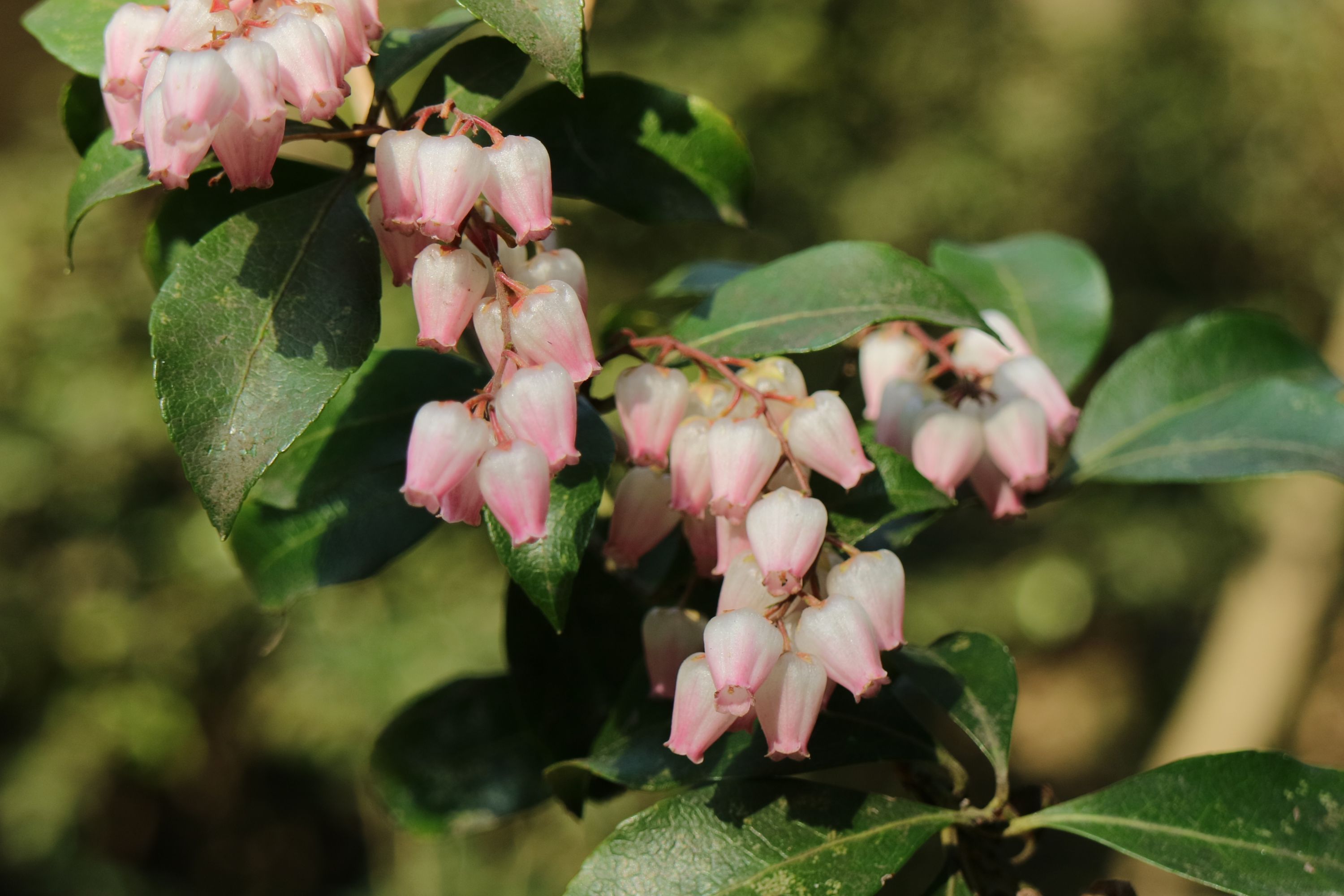Japanese andromeda
(Pieris japonica)

Description
Pieris japonica is a widely cultivated evergreen shrub that belongs to the heather family (Ericaceae). It is native to eastern Asia, specifically Japan, Taiwan, and parts of China, and is a popular ornamental plant worldwide. The plant is admired for its attractive foliage and elegant bell-shaped flowers, which bloom in early spring. Pieris japonica is commonly known as Japanese pieris, lily-of-the-valley bush, or andromeda. Description: Pieris japonica is a compact, slow-growing, and bushy shrub that can reach a height of 10-12 feet (3-3.5 meters) and a spread of 6-8 feet (1.8-2.4 meters). The plant has a dense and upright growth habit, with a rounded or conical shape. The leaves are evergreen, alternate, and glossy, measuring 2-5 inches (5-13 cm) long and 0.5-1.5 inches (1.3-3.8 cm) wide. They are lanceolate, oval, or elliptical, and have finely toothed margins. The foliage emerges bronze or red in spring and matures to dark green, creating a stunning contrast against the white or pink flowers. The flowers of Pieris japonica are borne in dense terminal clusters or racemes, which can be up to 6 inches (15 cm) long. They appear in early spring, usually around March or April, and last for several weeks. The blooms are pendulous, bell-shaped, and measure about 0.5 inch (1.3 cm) long. They are white or pink, often with a tinge of red or green, and have a delicate fragrance. The plant is monoecious, meaning that it produces both male and female flowers on the same plant. After the flowers fade, small brown capsules develop, which contain many small seeds. Cultivation: Pieris japonica is a relatively easy plant to grow, provided that its cultural requirements are met. It prefers a moist, well-drained, acidic soil that is rich in organic matter. The pH level should be between 4.5 and 6.0, and the soil should be kept consistently moist, but not waterlogged. The plant is intolerant of drought, alkaline soils, and heavy clay. It also does not tolerate full sun exposure and prefers partial shade, especially in hot climates. The plant is hardy in USDA zones 5-8, which means it can tolerate winter temperatures as low as -20°F (-28°C). In colder regions, it may require winter protection, such as mulching or wrapping, to prevent frost damage. Pieris japonica can also be grown in containers, provided that the potting mix is well-draining and acidic. Propagation: Pieris japonica can be propagated by several methods, including seed, cuttings, and layering. However, the most common method is by cuttings. Softwood cuttings can be taken in early summer, while semi-hardwood cuttings can be taken in late summer or early fall. The cuttings should be about 3-4 inches (7.6-10 cm) long and should include a node or two. They should be dipped in rooting hormone and placed in a well-draining potting mix. The cuttings should be kept moist and warm, preferably in a greenhouse or under a cloche. Rooting usually takes 4-6 weeks, after which the cuttings can be transplanted into individual pots. Pests and Diseases: Pieris japonica is a relatively pest and disease-resistant plant, but like any other plant, it can be affected by some common problems. Here are some of the most common pests and diseases that can affect Pieris japonica: Lacebugs - Lacebugs are small insects that feed on the undersides of leaves, causing a stippled appearance on the upper surface. This can lead to leaf yellowing, browning, and premature leaf drop. You can control lacebugs by using insecticidal soap or horticultural oil. Spider mites - Spider mites are tiny pests that can cause yellowing and bronzing of the leaves. They thrive in hot, dry conditions and can be controlled by increasing humidity around the plant or using insecticidal soap. Mealybugs - Mealybugs are soft-bodied insects that feed on plant sap, causing stunted growth and wilting. They also produce a sticky substance called honeydew that attracts ants and can lead to the growth of sooty mold. Mealybugs can be controlled by using insecticidal soap or neem oil. Phytophthora root rot - Phytophthora root rot is a fungal disease that attacks the roots of Pieris japonica, causing wilting, yellowing, and eventual death of the plant. It is usually caused by overwatering or poor drainage. To prevent this disease, make sure the soil is well-draining and avoid overwatering. Leaf spot - Leaf spot is a fungal disease that causes circular, brown spots on the leaves. It is usually caused by humid conditions and poor air circulation. To prevent this disease, avoid overhead watering and prune the plant to improve air circulation. Powdery mildew - Powdery mildew is a fungal disease that causes a white powdery coating on the leaves. It is usually caused by high humidity and poor air circulation. You can control powdery mildew by pruning the plant to improve air circulation and using a fungicide. In general, keeping your Pieris japonica healthy and well-maintained can help prevent many pest and disease problems. Regular pruning, adequate watering, and good air circulation can all help keep your plant healthy and disease-free.
Taxonomic tree:







